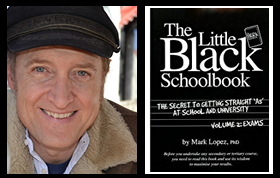Dr Mark’s The Meaning in a Nutshell
Joan London, The Golden Age (2014) — Novel
Joan London’s novel, The Golden Age (2014), is a teenage love story set in the early 1950s in Perth Western Australia in a convalescent hospital for young victims of polio called the Golden Age Children’s Polio Convalescent Home. Central to this story is a message of respecting young love and sexuality and allowing it to take its natural, gentle, and tender course. It is also about accepting the romantic and sexual feelings of the disabled, a group of people who, like the young, are unrealistically de-sexed in terms of conventional sexual morality. In addition, the novel argues for the tolerance of the lifestyle choices of an attractive, independent and sexual woman (who is a widowed mother) who seeks to find happiness her own way without being harshly judged and punished by others.
Rather than protecting individuals and enhancing their happiness, conventional sexual morality is depicted as intrusive, insensitive and cruel, inflicting emotional harm and suffering on decent, happy individuals when they had previously suffered none. In this novel, love and sexual contact do not bring harm. Instead, judgemental interference in the lives of those who express themselves in these ways inflicts gross injustices and deep, long-lasting psychological damage.
London, who had a deep interest in the Holocaust, made her central character Frank Gold, and his parents Meyer and Ida, Hungarian Jews who survived. This enables her to express her opposition to antisemitism and appreciation of refugee migration to Australia as benefitting both Australia and the refugees.
The novel is also about the post-war mass immigration program that brought hundreds of thousands of migrants and refugees to Australia. Notably, it deals with the challenges of acculturation and assimilation, with some migrants quickly embracing Australian ways and others being initially alienated and disappointed with what they found and therefore slower to appreciate their new land. However, the novel mostly looks appreciatively forward to the multiculturalism adopted in the 1970s, which celebrated the ethnic and cultural diversity that had transformed Australia. The novel, while not hostile to the Australia of the 1950s, sees the cultures brought by European migrants as having enriched Australia.
The novel is also a means for London to comment on an episode in the social history of Perth, the polio epidemic of 1953 to 1954, by capturing the pain and anguish experienced by the afflicted and their families, as well as conveying the courage that ordinary people had to summon to face and overcome this horrible illness. In this context, the novel pays tribute to the dedicated medical staff who helped these children and to the families that had to cope with such a severe challenge. Importantly, the novel also presents disabled people in a positive light as capable of fulfilling their personal dreams as to their career or vocation, which is a dimension of the novel that is meant to be affirming, optimistic and uplifting.
Student resources by Dr Mark Lopez
© Mark Lopez 2019 All RIGHTS RESERVED
The purpose of the concise notes of Dr Mark’s The Meaning in a Nutshell is to provide much needed help to students seeking to unlock the meaning of the texts with which they have to deal. (More elaborate notes are provided in lessons as part of my private tutoring business.)
Subject: The Golden Age meaning, The Golden Age themes, The Golden Age analysis, The Golden Age notes
© Mark Lopez 2019 ALL RIGHTS RESERVED.
Website published by https://doctormyweb.com
Student Resources by Dr Mark Lopez
More elaborate notes are provided in lessons as part of my Melbourne private tutoring business.
Student resources by Dr Mark Lopez
